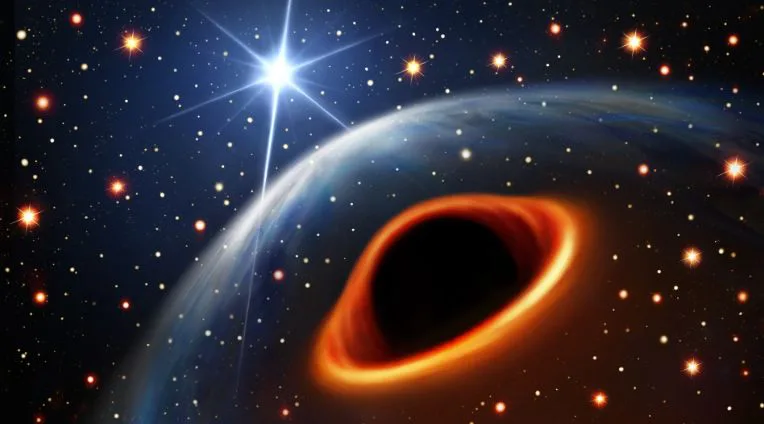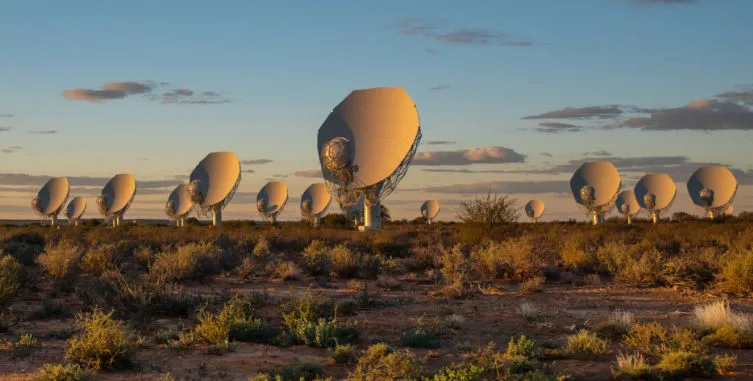
Exciting news from the cosmos! Astronomers from around the world, including the brains at The University of Manchester and the Max Planck Institute for Radio Astronomy in Germany, have stumbled upon an unknown object in the Milky Way. The newly discovered object is heavier than the heaviest neutron stars we know. And lighter than the lightest black holes we’ve seen.
The team used the MeerKAT Radio Telescope, to spot this mysterious object. This celestial entity is in orbit around a high-speed millisecond pulsar, situated around 40,000 light years away in a crowded region of stars called as a globular cluster.
By analyzing the precise ticks of the millisecond pulsar, they demonstrated that the massive object falls within the elusive black hole mass gap. The elusive black hole mass gap represents a zone where neither stellar-mass black holes (formed from collapsing massive stars) nor supermassive black holes (found at the centers of galaxies) are easily detected.
NGC 1851 Discovery Unveils Celestial Pair
Detected in the NGC 1851 cluster, the object’s nature is uncertain. Yet the identified celestial pair, consisting of a radio pulsar and a black hole, represents a potential breakthrough in astrophysics. Some of them include:
- Firstly, the discovery suggests that the radio pulsar and black hole are in a binary system, meaning they orbit around a common center of mass.
- Secondly, the presence of a black hole in a binary system with a radio pulsar provides a new opportunity to test Einstein’s general relativity.
- Thirdly, observing interactions within a binary system can offer clues about the formation, evolution, and properties of black holes.
UK project lead Ben Stappers, Professor of Astrophysics at The University of Manchester, said that the presence of a heavy neutron star in close proximity provides a unique laboratory for exploring nuclear physics under conditions of very high densities.
After all, in this intense gravitational environment, scientists can gain valuable insights into the fundamental properties of nuclear matter. Thus, it’ll help in unravelling the mysteries associated with the behavior of densely packed atomic particles.
Speculation on Black Hole Transformation
A neutron star, a dense remnant of a dead star, collapses when it accumulates too much mass, typically through absorbing or colliding with another star.
The aftermath of this collapse is a subject of speculation. However, researchers believe that these collapsed neutron stars could transform into black holes. Such entities possessing huge intense gravitational attraction that even light cannot escape their grasp.
Unlocking the Black Hole Mass Gap
Astronomers theorize that for a neutron star to collapse, it needs a total mass of 2.2 times that of the sun. However, observed black holes, created from these collapsing stars, are lighter than expected. They form a ‘black hole mass gap’, with the smallest observed being about five times the Sun’s mass.
The nature of objects in this mass gap remains a mystery. And the recent discovery might provide crucial insights to finally comprehend these enigmatic entities.
MeerKAT Telescope’s Precision
Prof Stappers explained that the highly sensitive MeerKAT telescope’s capability to uncover and study these celestial objects represents a significant leap forward. Additionally, the success of MeerKAT serves as a glimpse into the potential capabilities of the Square Kilometre Array, a future radio telescope project.
The Square Kilometre Array, with its larger scale and enhanced capabilities, is expected to further revolutionize our ability to explore and comprehend the mysteries of the universe, building on the groundwork laid by MeerKAT.

Takeaway
This study will surely pave way for fresh insights into the world of exotic objects in space. Like what they’re made of, and how they behave.
And if the discovered duo turns out to be a binary system, testing Einstein’s ideas about gravity in the most extreme cosmic conditions, will be a doable thing.
So, in a nutshell, this study could be a game-changer. It’s like opening a door to a whole new understanding of astrophysics, black holes, and what our super-advanced telescopes can actually do. The universe is full of surprises, and we’re just getting started on this exciting journey!



